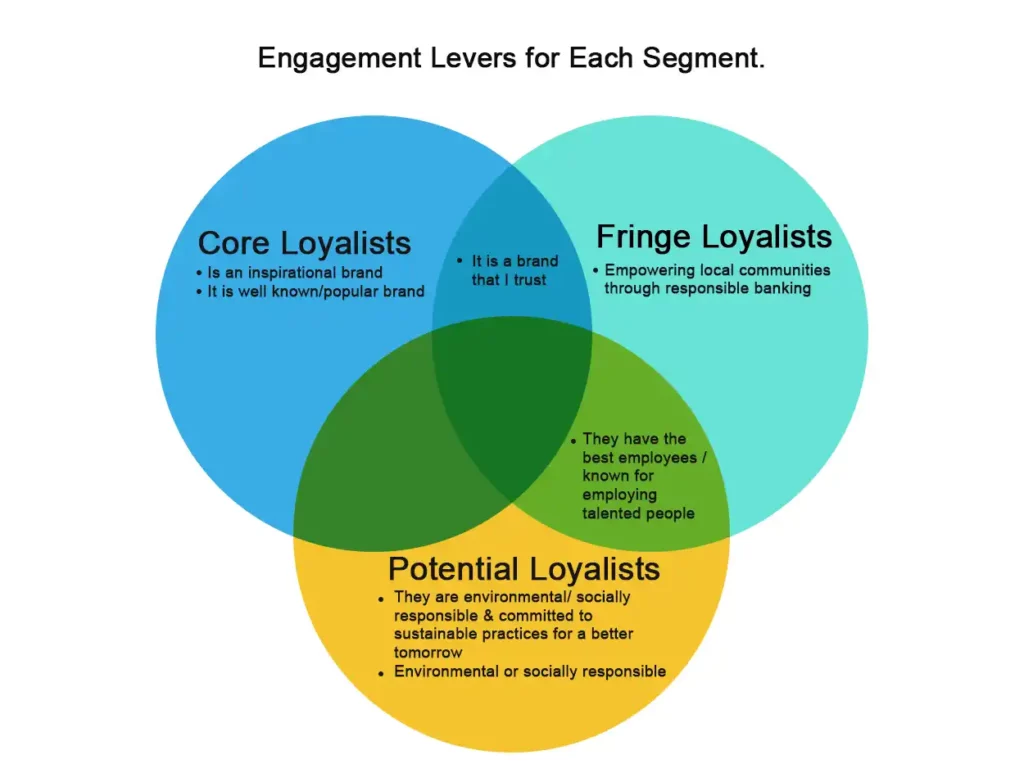The digital era has rewritten the rulebook on brand loyalty. Today, consumers are no longer bound by habit or limited choices. For brands looking to build meaningful customer relationships, it boils down to a few critical elements: being noticed above the din in crowded feeds, evoking emotion with the story, or connecting with the consumers’ values and beliefs. But in an algorithm-governed world where a single tweet can lead to brand erosion, how do you consistently deliver that “magic”?
As marketing guru and best-selling author Seth Godin starkly puts it: “People do not buy goods and services. They buy relations, stories, and magic.”
This is where a new wave of brand tracking tools is providing valuable insights into these dynamics, making it easier for organisations to identity opportunities for sustainable growth.
- What has Changed in the Digital Era?
- How Brand Tracking Tools are Driving Brand Loyalty
- Segment Smarter: Tailor Loyalty Strategies with Precision
- Decode What Triggers and Drives Loyalty: Emotional vs. Transactional
- Pinpoint Why They Stay or Leave: Diagnose Loyalty Gaps
- Turn Insight into Loyalty: Activate the Right Growth Levers
- Delivering a Cohesive Brand Experience
- FAQs
What has Changed in the Digital Era?
The age of the digital has flipped loyalty models upside down. Today, social media platforms like Instagram and X are necessary for engagement. Algorithms determine what consumers view and, thereby, what they perceive and select. As a result, what we expect from consumers today is transparency, real-time interaction, and customized experiences.
A recent industry report also reminds us that. Additionally, digital-first behavior has decreased brand stickiness. Millennials, in particular, are likely to switch brands on price, recommendations, or moral grounds.
How Brand Tracking Tools are Driving Brand Loyalty
In a highly competitive marketplace, continuous brand measurement is crucial for understanding brand perception and evolving consumer attitudes. Borderless Access addresses these needs with its proprietary brand tracking tool, Brand Kompass, which delivers actionable insights into brand health and consumer loyalty. Here’s how the tool achieves stellar value in this particular area.
Segment Smarter: Tailor Loyalty Strategies with Precision
Loyalty can be anywhere along a spectrum, not just all one way or the other. Brand loyalty and segmentation research shows that consumers can be either passionate fans or less regular users.
Brand Kompass sorts consumers into five different segments-
| Segment | Description |
| Core Loyalists | Devoted customers who consistently choose and advocate for your brand. |
| Fringe Loyalists | Loyal but may switch to competitors due to promotions or availability. |
| Potential Loyalists | Interested but not fully committed to regular purchases. |
| Open | Aware of your brand but haven’t formed a strong opinion. |
| Unaware | Not familiar with your brand at all. |
This is how deeper segmentation helps brands develop strategies that encourage customers to stay loyal. For instance, Core Loyalists are interested in exclusive perks, but Potential Loyalists need to be given a more detailed understanding of what your brand offers.
Decode What Triggers and Drives Loyalty: Emotional vs. Transactional
Loyalty stems from two key drivers: emotional and transactional. Emotional loyalty is about connection- shared values, memorable experiences, or brand identity. On the other hand, transactional loyalty is driven by practical factors like price or convenience.
Brand Kompass helps find out by using brand loyalty measures what motivates each segment. The Core Loyalists could care deeply about your brand’s eco-friendly actions, but Fringe Loyalists are more likely to be attracted by deals and discounts.
One of the recent studies based on the current state of retail banking in the US further demonstrates how our proprietary brand tracking tool can help leading banks balance functional delivery with emotional connection and build more valuable connections with customers over time.

Pinpoint Why They Stay or Leave: Diagnose Loyalty Gaps
To build brand loyalty, you must find out reasons why some consumers choose to stay or leave. Brand drift occurs when your products or services no longer meet customer expectations or when competitors outperform you on key points. This is increasingly common in today’s fast-paced market. Think of once-dominant brand like Nokia or Yahoo that lost ground as consumer needs shifted towards innovation and competition. In the digital space, food delivery apps and fintech platforms are constantly swapping market share as consumers chase better UX, pricing or aligned values.
Brand Kompass uses importance-performance mapping to help brands pinpoint exactly why consumers may be drifting away. This feature identifies gaps between what customers value most – such as innovation, trust or service – and how they perceive your brand’s performance in those areas. The tool collects and analyses direct consumer feedback to map these gaps visually and prioritise areas for improvement.
For instance, if Brand Kompass reveals that innovation is a priority in consumer expectations but your brand scores low on that front, it signals a need to invest in R&D. If customer service isn’t up to par, training activities can really help.
Overall, this diagnostic approach ensures your strategies are data-driven and impactful.
Turn Insight into Loyalty: Activate the Right Growth Levers
Understanding customer loyalty via different insights is just one step. The real value comes from acting on those insights.
With insights from brand tracking, you can design targeted strategies. Core Loyalists might benefit from exclusive experiences. At the same time, Potential Loyalists require strong campaigns that show why your brand is valuable.
Brand Kompass helps your company match product development, pricing, and distribution with what drives your customers. Because of this, you can make occasional users loyal to your brand.
Following this strategy means all your interactions with customers remind them of your brand’s promise, encouraging stronger loyalty.
Delivering a Cohesive Brand Experience
Consumers interact with brands in diverse ways—through social media, online purchases, and in physical retail touchpoints. Ensuring a consistent tone, message, and value system across these touchpoints is critical for building trust, recognition, and loyalty.
Brand Kompass ensures this consistency by analyzing how different audience segments perceive your messaging across channels. It identifies discrepancies in tone, language, or emotional cues—such as a warm, conversational tone online versus a generic, formal one in-store—and recommends precise adjustments to create a unified brand experience. Leading brands across industries that use our brand tracking tool have reported significantly higher engagement and conversion rates
On that note, we at Borderless Access are always committed to helping you growing your brand in an organic and sustainable manner.
Reach out to us to find out how our brand tracking tool can help you make your actions match the beliefs that really matter to your customers.
FAQs
1. How has digital transformation influenced brand loyalty?
Online platforms have moved loyalty from habit to preference. Today, consumers require customized experiences, transparency, and value. To counter this, brand tracking tools such as Brand Kompass help brands comprehend these changes and study behavior and inclinations. This allows brands to come up with customized strategies to establish brand loyalty in a crowded market.
2. What is Brand Kompass, and how does it serve in loyalty?
Brand Kompass is a brand health tracker that segments consumers into categories like Core and Potential Loyalists. It does this by using data to uncover emotional and transactional drivers of loyalty. Also, by mapping consumers’ needs and brand performance, it informs tailored strategies.
3. Why is emotional loyalty important in the digital age?
Emotional loyalty creates deeper relationships than price or convenience. It is powered by common values and memorable experiences. Nowadays, in the digital era, consumers crave brands that they can call their own. This pushes brands to create campaigns that create long-term relationships and foster repeat behavior and advocacy.
4. How do brands measure and track loyalty in the long term?
Brands can track loyalty through metrics like affinity strength and advocacy potential. This is achieved through digital monitoring tools for brand tracking across markets and time. Brand Kompass provides real-time dashboards to track brand loyalty metrics. This ensures that teams can dynamically adjust strategies so that they are in line with consumer needs and have robust, relevant relationships in a fast-changing digital landscape.




